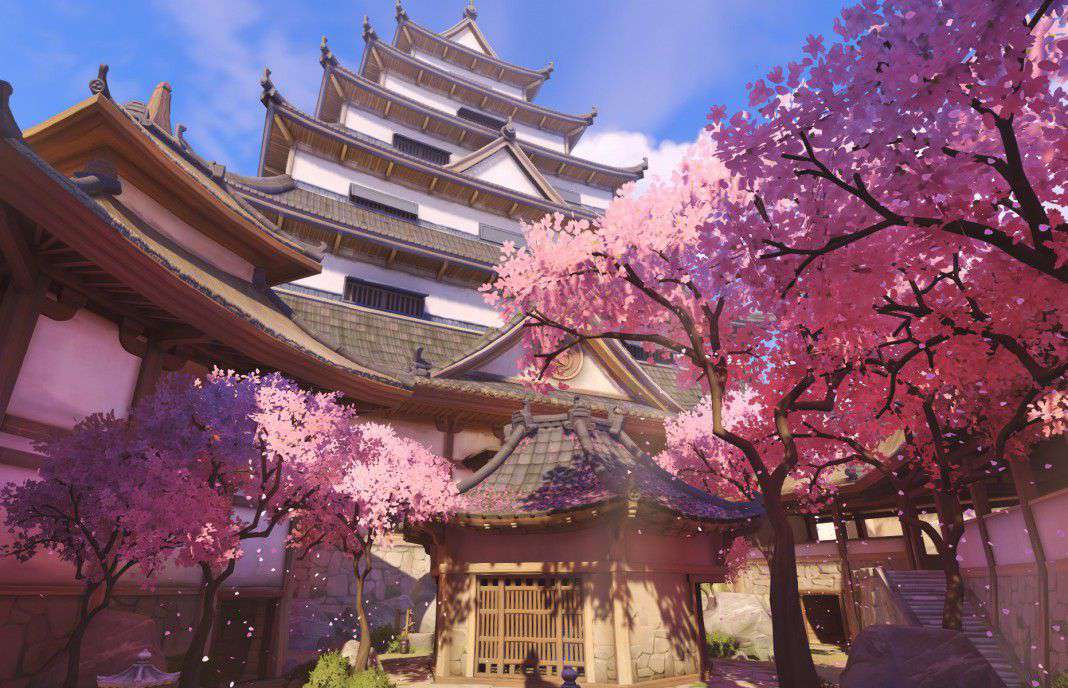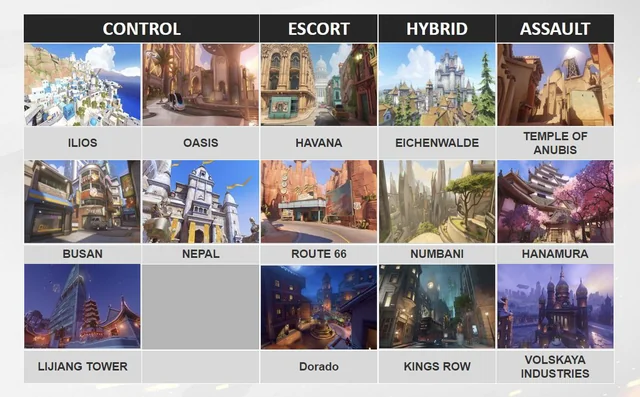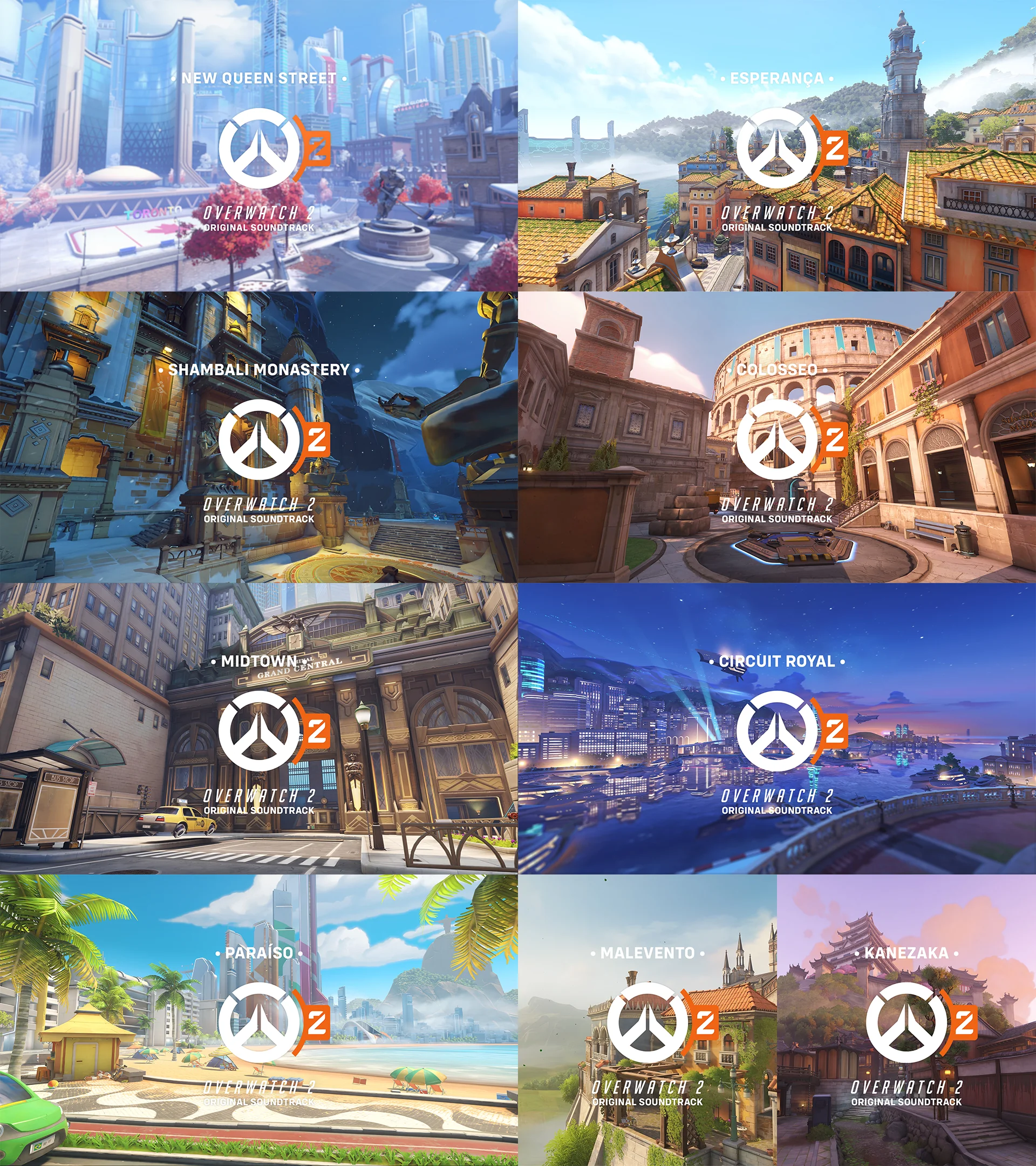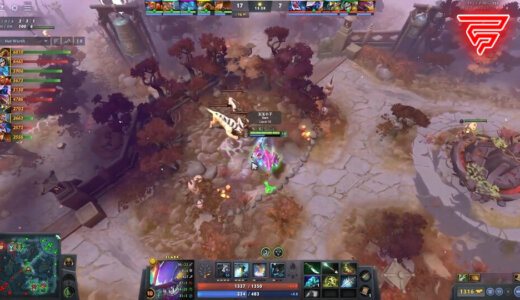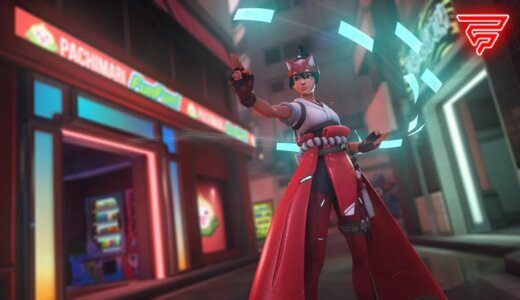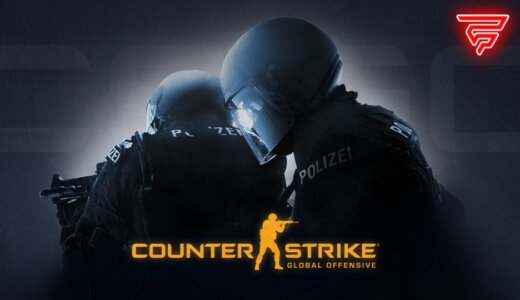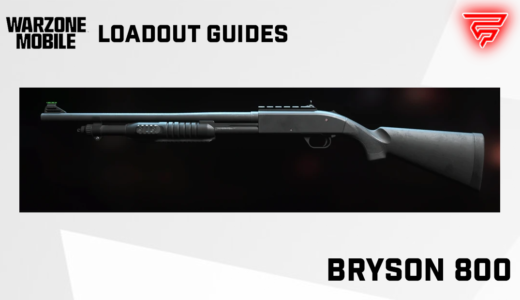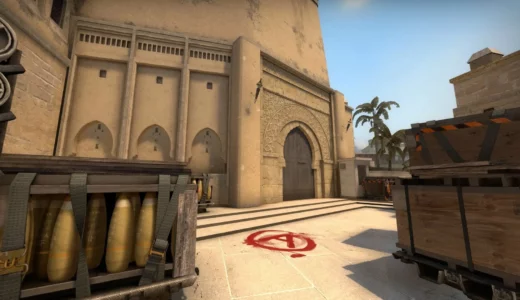Overwatch, the team-based multiplayer first-person shooter developed by Blizzard Entertainment, is known for its diverse and engaging maps. Each map in Overwatch offers a unique environment with different objectives that require distinct strategies and team compositions. These battlegrounds are set in a variety of locations across the world, from the futuristic cityscapes of Numbani to the tranquil temples of Nepal, providing players with a rich visual and tactical experience.
The design of the maps in Overwatch is a critical aspect of the game’s appeal. They are constructed to support the game’s dynamic gameplay, encouraging movement, flanking routes, and strategic positioning. The maps are categorized into several types based on the primary game modes: Assault, Escort, Hybrid, and Control. Each type presents a different main objective, from capturing points to escorting payloads, forcing teams to adapt their approach with every match.
Map knowledge is essential for success in Overwatch, as players who understand the intricacies of each map can predict enemy movements, secure advantageous positions, and effectively utilize the unique features of the terrain. The balance of openness and chokepoints, high ground and cover, as well as health pack placements, can significantly influence match outcomes. Therefore, thorough exploration and practice on each map can provide teams with a competitive edge.
Map Types
Overwatch features a variety of map types, each offering a unique objective and playstyle. They are categorized into Assault, Control, Escort, and Hybrid. Understanding these types lends to strategic gameplay and team coordination.
Assault
In Assault maps, the attacking team’s goal is to capture two points in sequence, while the defense aims to stop them. Maps include:
- Hanamura
- Temple of Anubis
- Volskaya Industries
Control
Control maps have a best-of-three format where teams fight to hold a single point until their capture percentage reaches 100%. Each round takes place on a different part of the map. Examples are:
- Ilios
- Nepal
- Lijiang Tower
Escort
The Escort format tasks the attacking team with escorting a payload along a fixed path to a delivery point. The defense’s objective is to halt the payload’s progress. Notable maps include:
- Dorado
- Route 66
- Watchpoint: Gibraltar
Hybrid
Hybrid maps combine elements of Assault and Escort. Attackers first capture a point and then escort a payload. Hybrid maps consist of:
- King’s Row
- Numbani
- Eichenwalde
Map Design Principles
Map design in Overwatch is a meticulous process, focusing on competitive balance, visual clarity, and strategic diversity. Each map is crafted to offer a unique experience that challenges players to adapt their strategies and skills.
Symmetry
In Assault and Control maps, symmetry plays a pivotal role in ensuring fairness. The maps are mirrored across a central axis, so neither team has a territorial advantage. Temple of Anubis, for example, has equally distanced objectives for both defending and attacking teams.
Choke Points
Choke points are narrow areas where teams often clash, forcing engagements that test a team’s coordination and skill. Maps like Eichenwalde feature a prominent choke point after the first capture point, under the castle gate, which defenders can use to stall the attackers’ progress.
Spawn Locations
Spawn locations are carefully placed to provide safety and balanced travel time to objectives. On Hybrid maps such as King’s Row, spawn rooms move forward on the map as objectives are captured, maintaining the pace of the game while preventing any team from having excessively long travel times.
Objective Areas
Objective areas are distinctly marked and spacious, accommodating various playstyles and strategies. On Escort maps like Watchpoint: Gibraltar, the areas around moving payloads are designed with multiple access points and cover, giving both attackers and defenders multiple tactical options.
Competitive Play Maps
In Overwatch, the maps used for competitive play are selected to provide a balanced field for team strategy and individual skill. These maps undergo seasonal rotations and are curated for esports events.
Seasonal Rotation
Overwatch features a dynamic map pool that rotates on a seasonal basis. This ensures that players are constantly adapting and provides a fresh competitive experience. For example:
- Assault: Hanamura, Temple of Anubis
- Escort: Watchpoint: Gibraltar, Dorado
- Hybrid: King’s Row, Eichenwalde
- Control: Lijiang Tower, Nepal
Esports Selection
In esports, the map pool is carefully chosen to test teams’ strategic depth and adaptability. Maps are often selected to match the specific phase of the tournament:
- Group Stage: A broader variety of maps is used to sort out teams’ initial standings with emphasis on diverse game modes.
- Playoffs: Maps that emphasize high skill ceilings and teamwork, such as King’s Row and Lijiang Tower, are prioritized.
Arcade and Custom Maps
Within Overwatch, Arcade and Custom Maps offer players a variety of game modes beyond the standard match types. These include unique rules and objectives tailored to different styles of play.
Deathmatch
In Deathmatch, players aim to score eliminations in a free-for-all format. Key maps for this mode include Château Guillard and Petra, both designed with close-quarters combat and environmental hazards that players must navigate.
Capture the Flag
Capture the Flag (CTF) challenges teams to secure the enemy team’s flag while protecting their own. Maps such as Ayutthaya are specifically adapted for CTF, featuring symmetrical layouts that facilitate both defense and offense.
Elimination
Elimination mode focuses on small team skirmishes where players must outlast their opponents, with maps like Black Forest, Castillo, and Ecopoint: Antarctica offering tight spaces that escalate the combat intensity. Layouts are critical here, providing limited health packs and encouraging strategic play.
Lore and Aesthetics
Overwatch maps are infused with rich lore and distinctive visual themes, providing an immersive experience that connects gameplay with the game’s overarching narrative.
Map Backstories
King’s Row: Set in the heart of London, King’s Row is a map where omnics and humans are in conflict. The story centers on a robot rights movement, with the map featuring routes that both attackers and defenders navigate through to either enable or disable an omnic-powered device.
Hanamura: This iconic map is a Japanese village belonging to the Shimada Clan, known for its criminal history. The map blends traditional aesthetics with futuristic elements, reflecting the tension between Hanzo Shimada’s honor-bound background and the modern world.
Dorado: Dominated by the vibrant Festival of the Dead, Dorado is located in Mexico and has its narrative tied to the global energy company, LumériCo. The attacking team’s objective is to escort a payload of a power core to LumériCo’s building, which is opposed by the defending team.
Visual Themes
Eichenwalde: The map is a destroyed battleground, which provides a contrast between overgrown nature and the remains of a forgotten conflict, symbolizing the battle where the Crusader Balderich von Adler made his last stand.
Oasis: Featuring a high-tech city in the Arabian Desert, Oasis showcases a fusion of futuristic technology and luxurious aesthetics, illustrating the map’s underlying theme of a utopia born from the world’s leading scientists and their advancements.
Ilios: Based in the Greek isles, Ilios is renowned for its bright, sunlit Mediterranean architecture. The use of bold blues and dazzling whites emphasizes the map’s leisurely coastal atmosphere while retaining ties to the battleground’s ancient history.
Community and Creations
Overwatch’s vibrant community actively participates in the creation of custom content, enhancing the gameplay experience. They not only engage with the game but also contribute to its diversity through designing innovative maps.
Workshop Maps
Within the Overwatch Workshop, players can modify game mechanics and create new experiences. Launched in April 2019, the Workshop grants creators robust tools to manipulate the rules and build their own custom maps. For instance:
- Aim Training: Players develop custom maps specifically for improving aiming skills.
- Parkour Challenges: Maps designed to test mobility and control over heroes.
Fan-Made Maps
The community’s artists and designers often showcase their talent through fan-made Overwatch maps. These are not officially playable in-game but reflect the desire for new battlegrounds. Examples include:
- Cityscapes: Fans have designed urban maps set in locations like Rio de Janeiro or Tokyo.
- Cultural Landmarks: Some creators craft maps centered around famous landmarks or historical sites.
Updates and Changes
Over time, Overwatch maps receive various updates and changes to improve gameplay and balance. These typically involve alterations to the map layout, object placement, or visual aesthetics.
Key Alterations:
- Spawn Points: Adjustments to spawn points to reduce travel time to objectives or to balance defender’s advantage.
- Health Packs: Relocation or addition/removal of health packs to tweak map sustain dynamics.
_Map-Specific Changes:**
- Temple of Anubis: The developers made minor adjustments to sight lines to prevent defenders from having excessive advantage.
- Hanamura: Added new flanking routes to allow for additional attack strategies.
Environmental Hazards:
- Placement and frequency of environmental hazards are occasionally tweaked, such as altering the speed of moving platforms or the locations of pitfalls.
Accessibility Improvements:
- Obstacles adjusted to streamline navigation for characters with limited mobility options.
Recent Patch Notes Highlights (Patch 1.48):
- Blizzard World: Increased the size of capture points to allow for more dynamic team fights.
- Route 66: Modified the payload route slightly to eliminate certain sniping spots deemed too powerful.
These updates are primarily derived from community feedback and internal data analysis. They aim to offer a fair and engaging experience for all levels of play. Regular patch notes and developer updates provide detailed insights into each set of changes.
Map Strategies and Tactics
In Overwatch, each map presents unique challenges and opportunities. Players should approach each map with a strategy tailored to its specific layout and objective types.
Control Maps:
- Positioning: Teams should secure high ground for better control and visibility. Characters with area denial abilities, like Mei, are advantageous here.
- Team Composition: A balanced team with a mix of damage, tank, and support heroes helps sustain prolonged fights on the point.
Assault Maps:
- Synchronization: Teams must synchronize ultimate abilities to breach defenses. For example, Zarya’s Graviton Surge can be combined with Hanzo’s Dragonstrike.
- Staggering: After capturing the first point, quickly engage the second to catch defenders off-guard.
Escort Maps:
- Payload Presence: Always keep at least one person on the payload to maximize its movement.
- Flanking Routes: Utilize characters who can exploit side paths, such as Tracer or Genji, for surprise attacks on the backline.
Hybrid Maps:
- Initial Capture: Similar to assault, focus on ultimate coordination for the first point.
- Escorting: Once the payload is unlocked, refer to escort map strategies for successful advancement.
Map-Specific Tactics:
| Map | Tactic |
|---|---|
| Hanamura | Use vertical mobility to gain advantage on Point B. |
| Route 66 | Control the gas station as a defensive stronghold. |
| Lijiang Tower | Contest the control point from the outer walkways. |
Teams should communicate effectively and adapt their tactics to the evolving battlefield. Objectives take precedence, and hero switching to address specific map challenges can be the key to victory.
